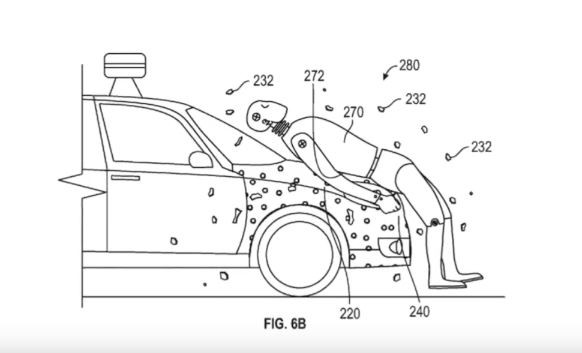Self-driving cars are designed to prevent road accidents. However, Google has patented a pedestrian flypaper for collisions that can still happen in the future.
Since airbags would not really help those who have been hit by the self-driving car, the search engine giant believes that the best way to minimize harm and injury is to stick them to the hood of the vehicle. This way, the body of the pedestrian would not be thrown further after the hit.
Google has already been granted the patent. They could be fitting their self-driving car prototypes soon with the pedestrian flypaper they would develop.
Trapping the pedestrian victim's body onto the hood does make sense as the impact from the car's hit could send them flying towards more danger in the road. Sticking them to the hood until the autonomous vehicle stops would hopefully minimize the risk for more harm and danger, The Verge reported.
The patent from Google reads: "The adhesive bonds the pedestrian to the vehicle so that the pedestrian remains with the vehicle until it stops and is not thrown from the vehicle."
Obviously, the flypaper would also attract bugs and dirt because of its adhesive nature. Google plans to tackle the problem by putting an "eggshell" exterior covering on the hood which will break and reveal the flypaper inside once a pedestrian gets hit, Gizmodo has learned.
One problem for the exterior part is that it could actually be more hurtful for the pedestrian. The search engine giant would have to tweak their formula more in order to really bring down the risk of more injuries and harm to the victims.
Another problem that the solution might face is that it would actually be more dangerous if the self-driving car would also collide with a wall or fall into a ravine. The pedestrian will be hurt more as the autonomous vehicle hits another obstacle up ahead before it stops.
Prevention is always better than the cure. Google could just make their self-driving cars more intelligent and invest in the autonomous technology more in order to prevent road accidents in the first place.



























